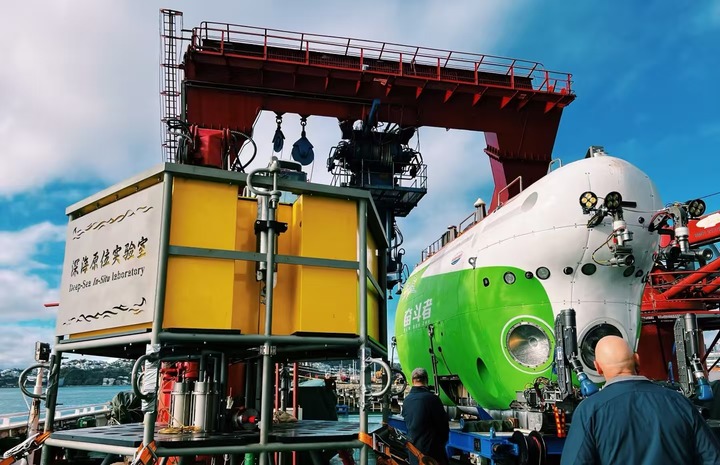
Recently, the "Global Hadal Exploration Program", an international major scientific project led by the Institute of Deep Sea Science and Engineering of the Chinese Academy of Sciences, was officially approved by the Executive Committee of the United Nations "Decade of Ocean Science for Sustainable Development", marking a new chapter of global cooperation in China's hadal scientific research.
The "Decade of Ocean Science for Sustainable Development" is an international scientific initiative led by the Intergovernmental Oceanographic Commission of UNESCO, which aims to provide scientific support for achieving the United Nations Sustainable Development Goals by strengthening global ocean scientific research collaboration. Reporters learned that the "Global Abyss Exploration Program" was jointly initiated by the Institute of Deep Sea Science and Engineering of the Chinese Academy of Sciences and scientific research institutions in more than 10 countries including New Zealand, Denmark, Germany, Chile, France, Indonesia, Brazil, Russia, India, Cook Islands, Papua New Guinea, Singapore, and Portugal.
In 2014, the Chinese Academy of Sciences launched the "Hayward Science and Technology Research Program"; in 2016, the Chinese Academy of Sciences broke through the 10,000-meter scientific research "forbidden zone" of the Mariana Trench, ushering in the "10,000-meter era" of deep-sea research; in 2022, relying on the world's only strong operational capability full-sea-depth manned submersible "Fendouzhe" and the "Exploration" series of scientific research vessels, the "Global Hadal Deep Diving Exploration Program" was launched. So far, it has joined hands with 145 scientists from 10 countries and reached 9 hadal trenches around the world, including the Mariana Trench, Kermadec Trench, and Puigco Trench, through 214 dives.

On March 21, the deep-sea in-situ laboratory completed its mission in the Puisco Trench. Photo by Institute of Deep-sea Science and Engineering, Chinese Academy of Sciences
According to reports, the "Global Hadal Exploration Program" focuses on the multi-scale processes of life geology in the extreme environment of the hadal. It conducts multidisciplinary, multi-trench, and cross-border deep-sea scientific research around the distribution pattern of hadal life and life evolution, plate subduction and geological structural evolution, deep and seabed material and energy exchange, hadal carbon cycle and global change, and hadal environmental changes under the influence of human activities. It aims to advance into the "no man's land" of the deepest ocean on Earth, broaden the new frontier of human cognition of the extreme environment, geology and life in the hadal, establish a hadal science discipline system, and provide important scientific support for the exploration, protection and governance of the deep sea.
The "Global Hadal Exploration Program" team will focus on promoting the construction of the Global Hadal Research Center under the relevant international cooperation framework, organize and implement annual manned deep-sea joint scientific expeditions, carry out systematic cooperative research, regularly publish scientific expedition progress and research results, and establish relevant open sharing mechanisms. Its launch and implementation will further lead the international hadal science to transform from isolated research to systematic research, and jointly promote the development of the international hadal discipline.
(Original title: "Global Abyss Exploration Program Approved")